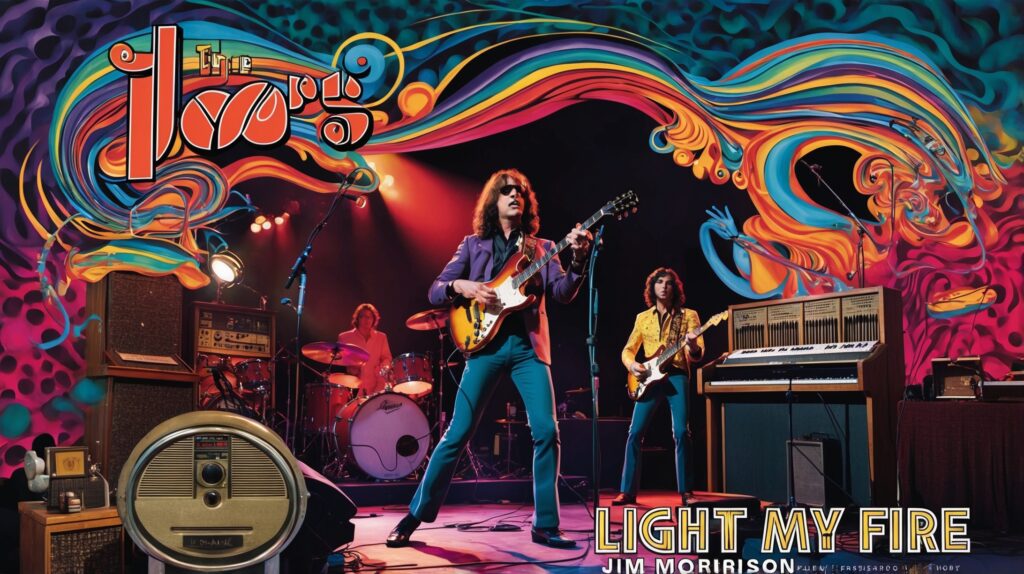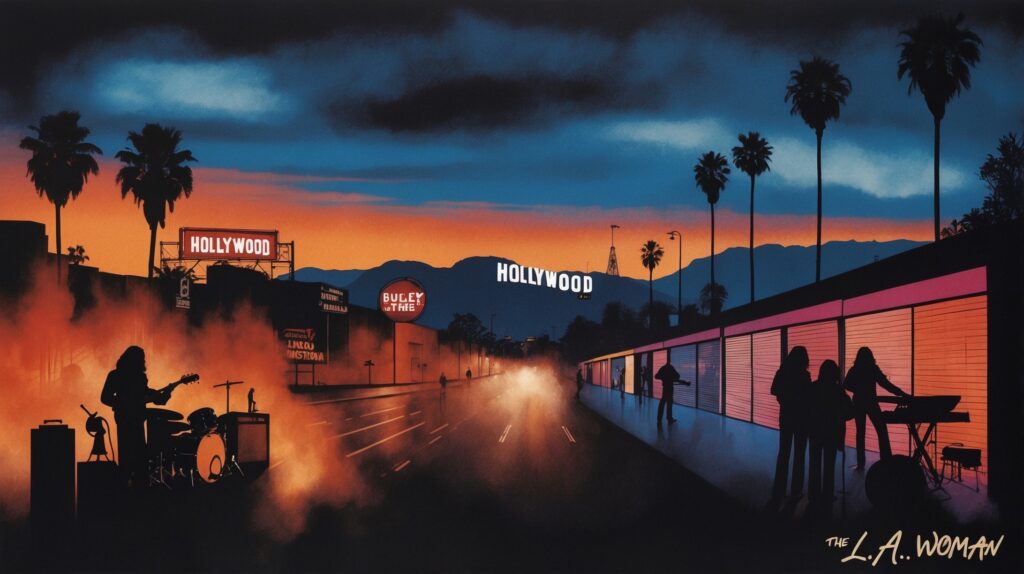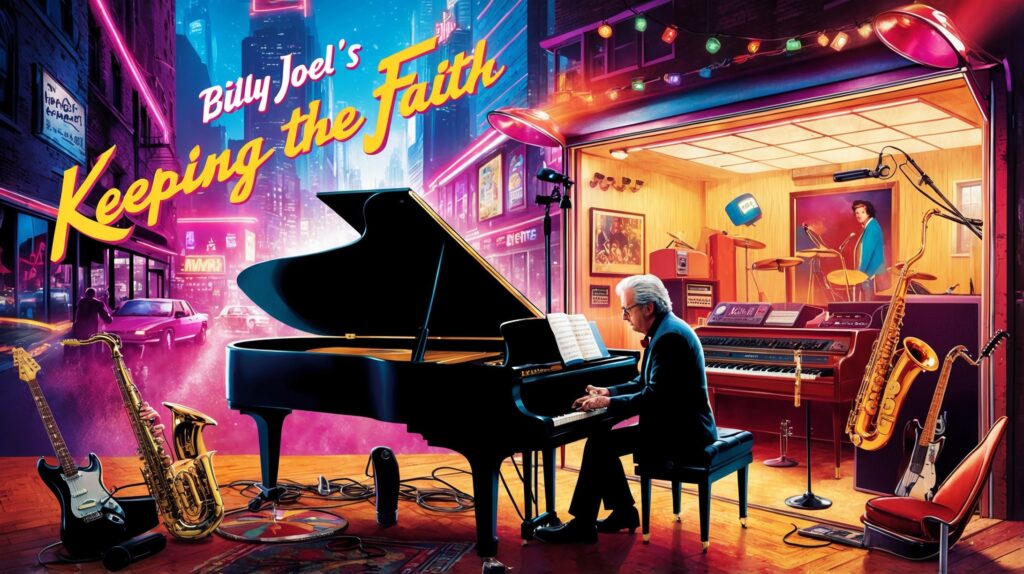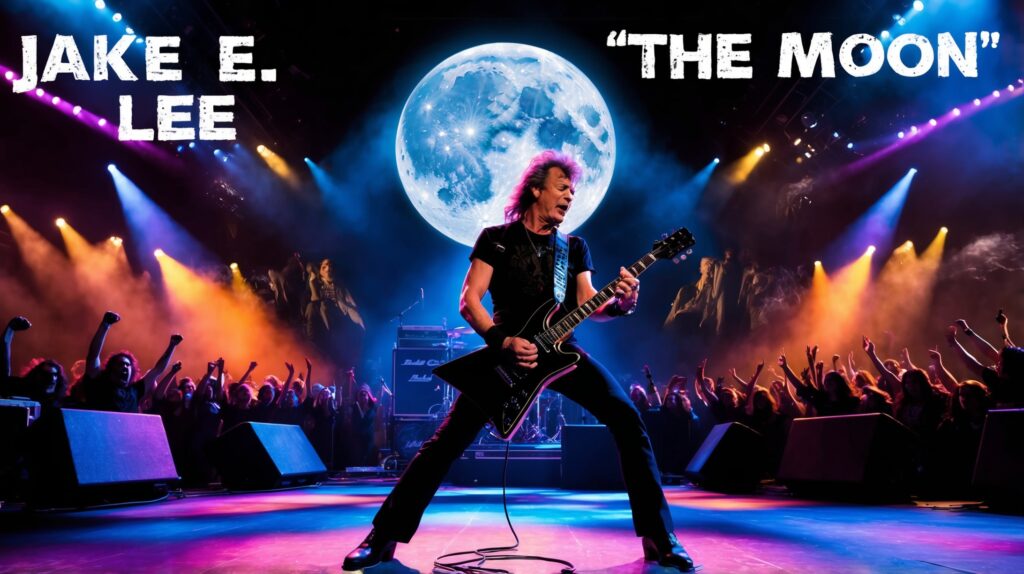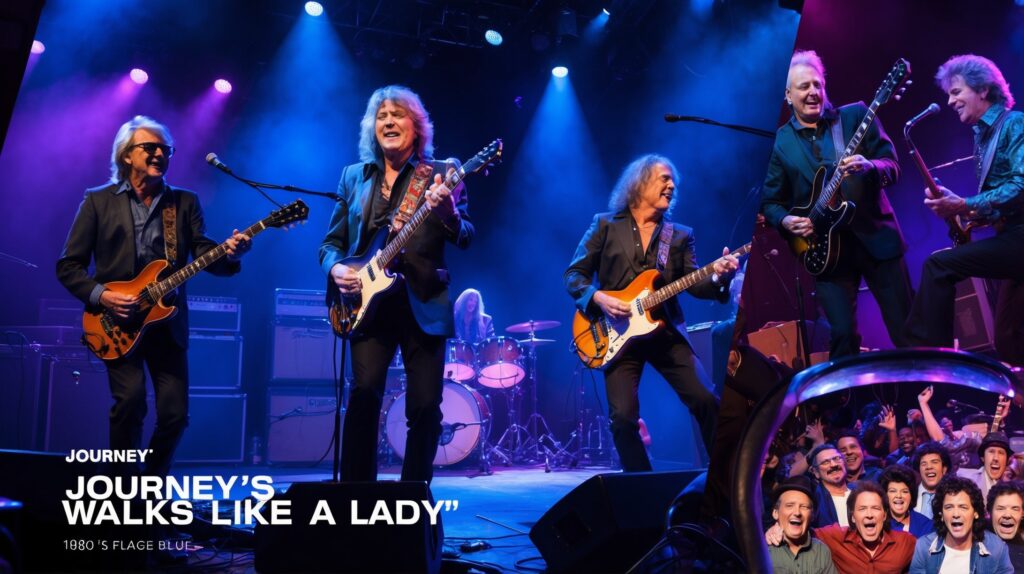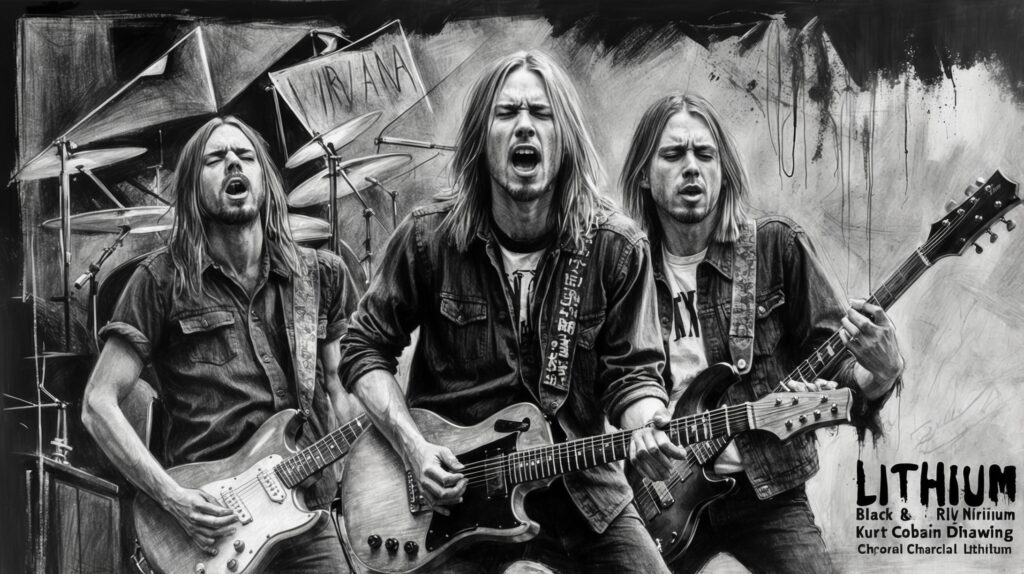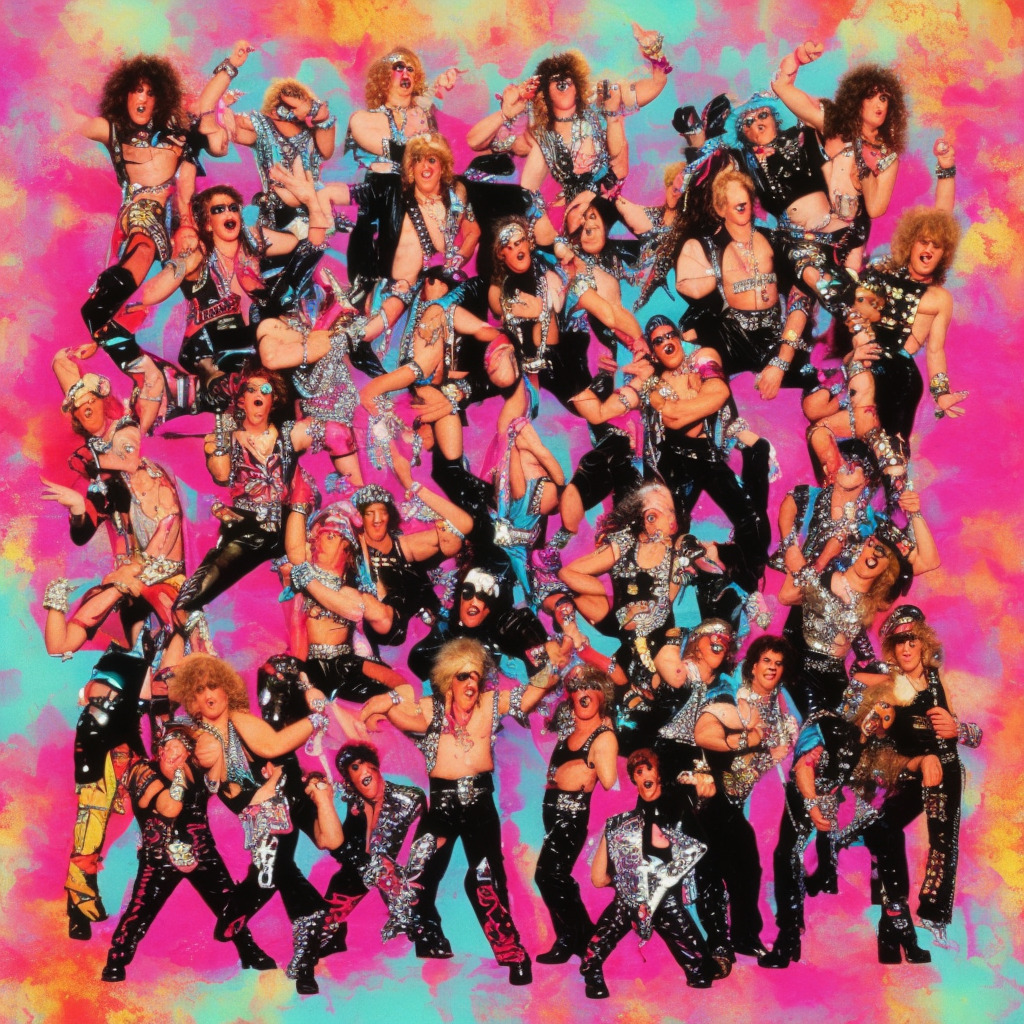The Doors: Breaking Through the Psychedelic Barriers of Rock
“The Doors revolutionized rock music with their unique blend of styles and the powerful allure of Jim Morrison. The release of ‘Light My Fire’ marked a pivotal moment, showcasing their ability to captivate and challenge the zeitgeist of the 1960s counterculture movement.”
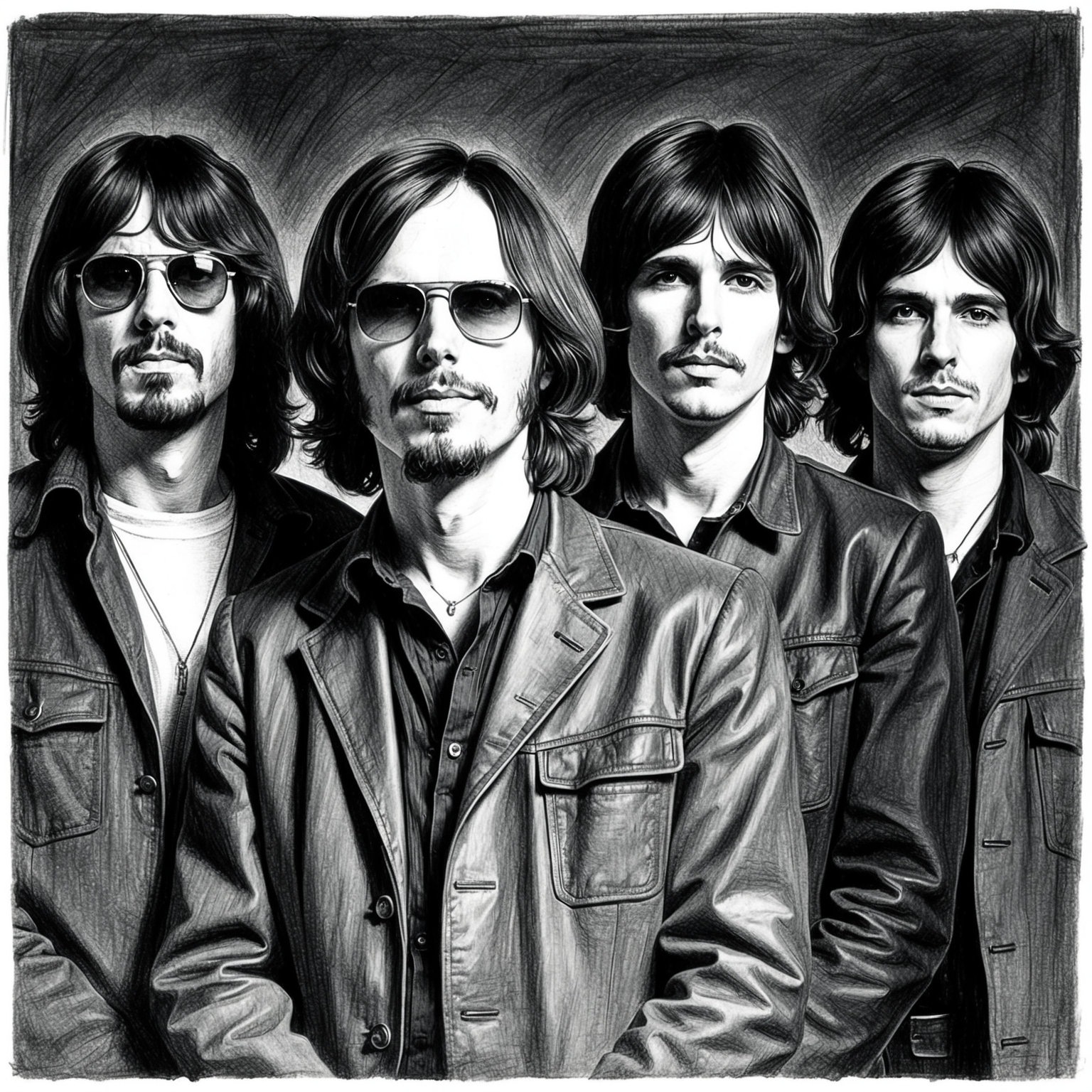
The Doors, an iconic name in the pantheon of rock music, emerged as one of the most innovative and influential bands of the late 1960s. Formed in Los Angeles in 1965, the band’s unique fusion of blues, rock, and psychedelic elements helped redefine the music scene of the era. “Light My Fire,” a standout track from their self-titled debut album, played an instrumental role in catapulting the band to stardom and cementing their place in the annals of rock history.
Jim Morrison, the enigmatic frontman of The Doors, was more than just the face of the band. He was a compelling poet and a charismatic performer whose stage presence left audiences spellbound. Morrison, along with keyboardist Ray Manzarek, guitarist Robby Krieger, and drummer John Densmore, formed a cohesive unit that thrived on the collective creativity of its members. Each contributed a distinct voice, creating a sound that was unmistakably their own.
This particular era, the mid-to-late 60s, was a period of artistic exploration and social upheaval. During this time, The Doors, with their provocative lyrics and experimental sound, challenged the conventional norms of rock music. The release of “Light My Fire” in 1967 coincided with the height of the counterculture movement, resonating deeply with a generation eager for change. The song’s daring approach and lyrical intensity found a receptive audience, propelling it to the top of the charts and making The Doors a household name.
In an industry accustomed to cookie-cutter hits, The Doors collaborated in a manner that encouraged mutual creative input. Their studio sessions were dynamic, reflecting their individual strengths while enhancing the overall composition. The story of “Light My Fire” illustrates this synergy; guitarist Robby Krieger initially wrote the song, capturing the quintessential vibe of the band, while Morrison’s vocal prowess brought it to life with unforgettable flair.
Crafting the Flames: The Composers Behind ‘Light My Fire’
Discover the artistic collaboration and stylistic fusion behind The Doors’ ‘Light My Fire,’ highlighting Robby Krieger’s vital role and the band’s creative synergy.
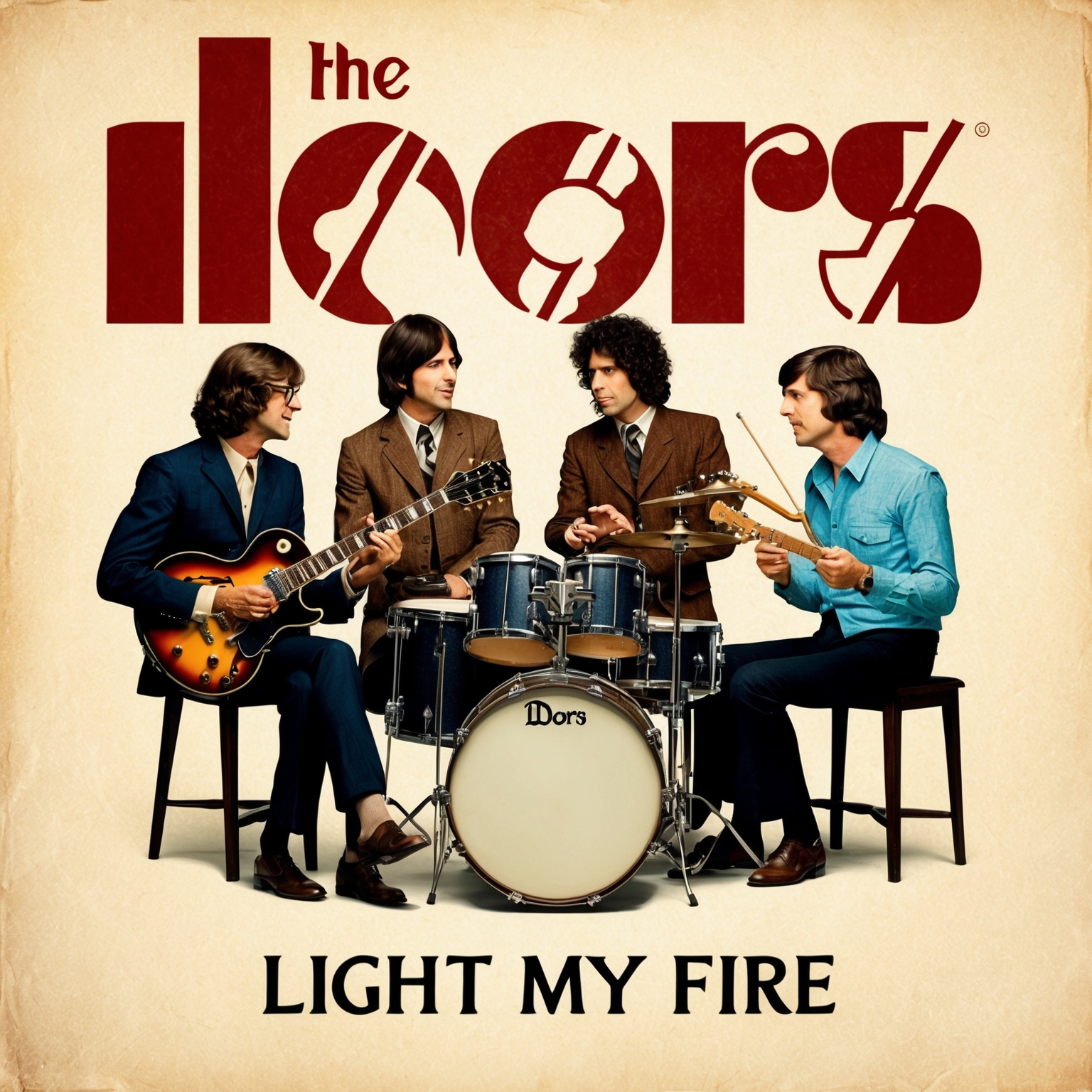
Background and Career: The Minds Behind the Music
“Light My Fire,” a timeless piece by The Doors, owes its genesis to the creative minds within the band. Primarily credited to guitarist Robby Krieger, the song’s composition was a group effort. Krieger, with his classical guitar background, brought a unique sensibility to the band, which combined with the creative genius of Jim Morrison, Ray Manzarek, and John Densmore. The Doors were known for their collective approach, where each member’s musical prowess played a crucial role in the songwriting process.
Musical Style and Influences: Fusion of Genres
Krieger’s style is an eclectic mix of rock, flamenco, jazz, and blues, reflecting his diverse musical influences. He was particularly inspired by the flamenco guitar, which he seamlessly integrated into rock music, giving The Doors their distinctive sound. This blending of styles is evident in “Light My Fire’s” intricate guitar work, which merges with Manzarek’s jazz-influenced organ lines.
Role in the Song’s Creation: Collaborative Creativity
The composition of “Light My Fire” was a collaborative effort, but it was Krieger who first penned the song. His idea was then shaped by the band’s collective input, with Manzarek crafting the iconic organ intro and Morrison contributing to the lyrics. This synergy among the band members was key to the song’s eventual success, creating a hallmark track that perfectly captured their innovative spirit.
Celebrating the Legacy: Awards and Notable Covers of ‘Light My Fire’
Light My Fire’ by The Doors boasts multiple accolades, inspiring numerous cover versions by diverse artists, and is frequently featured in movies, TV shows, and video games.
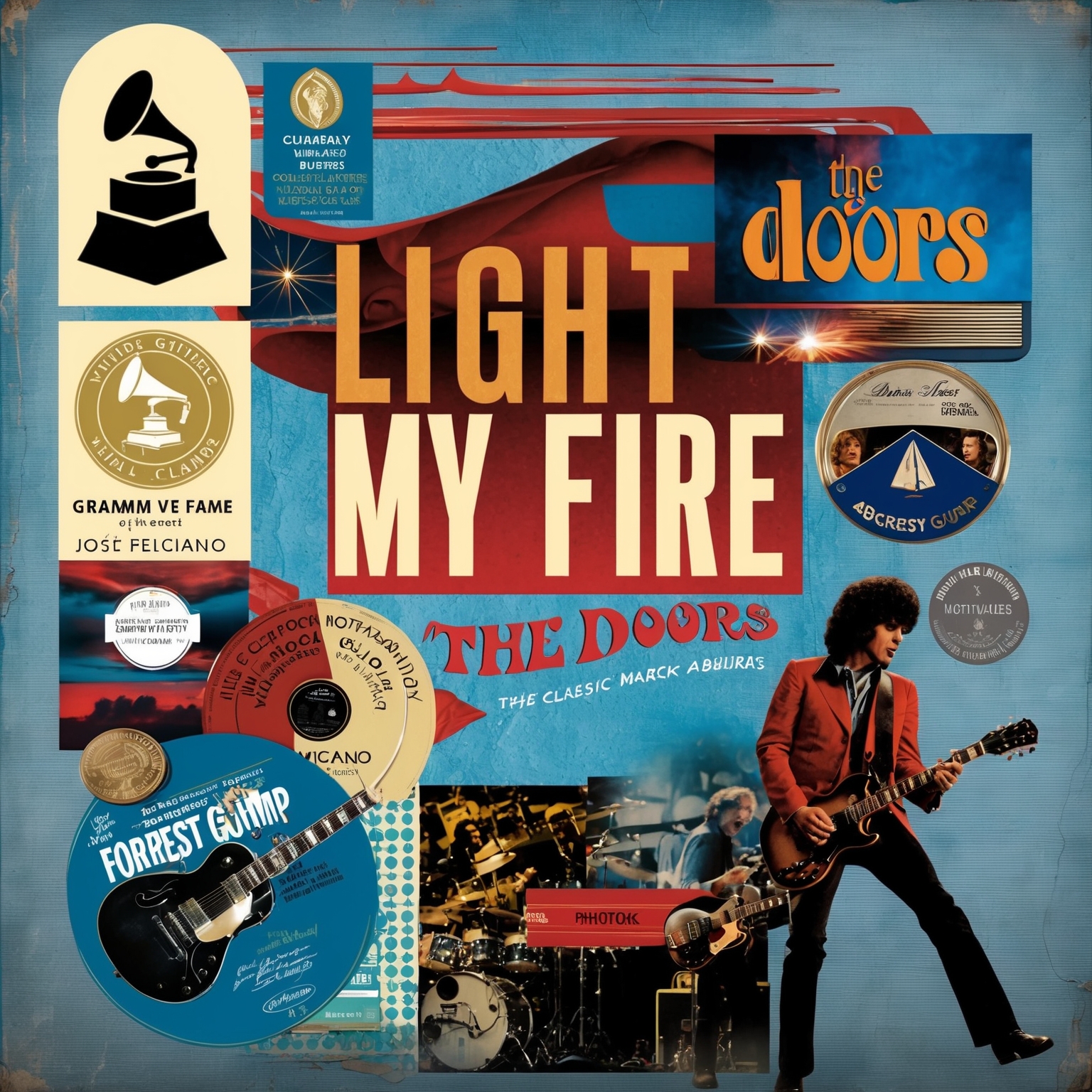
‘Light My Fire’ by The Doors is not just an iconic rock song but a cultural phenomenon that has received numerous accolades and inspired many artists over the decades. While the track did not initially win any music awards at the time of its release in 1967, its enduring legacy has solidified its place in the annals of rock history. Its selection for inclusion in the Grammy Hall of Fame is a testament to its timeless appeal. This prestigious accolade honors recordings of lasting qualitative or historical significance, and ‘Light My Fire’ exemplifies both.
Beyond awards, the song has been frequently covered by other artists, each bringing their unique flair to this classic. Notably, José Feliciano’s 1968 rendition added a Latin jazz touch, achieving commercial success and winning a Grammy Award for Best Male Pop Vocal Performance. Feliciano’s version still resonates today, showcasing the song’s versatility and broad appeal. Likewise, musicians like Stevie Wonder and Shirley Bassey have contributed remarkable covers, ensuring that the song continues to transcend generational and genre boundaries.
Famous for its feature in pop culture, ‘Light My Fire’ has made appearances in television shows, movies, and video games, reaching even those who might not typically listen to classic rock. Prominent placements include movies like ‘Forrest Gump’ and TV shows like ‘Miami Vice’, where its unmistakable organ intro instantly sets the mood. This multifaceted presence helped introduce the song to new audiences, maintaining its relevance in contemporary media culture.
Scaling the Charts with ‘Light My Fire’: A Journey Through Success
Light My Fire’ by The Doors was a groundbreaking success, reaching number one on the Billboard Hot 100 in 1967. It became a turning point in the band’s career and left an indelible mark on rock music.
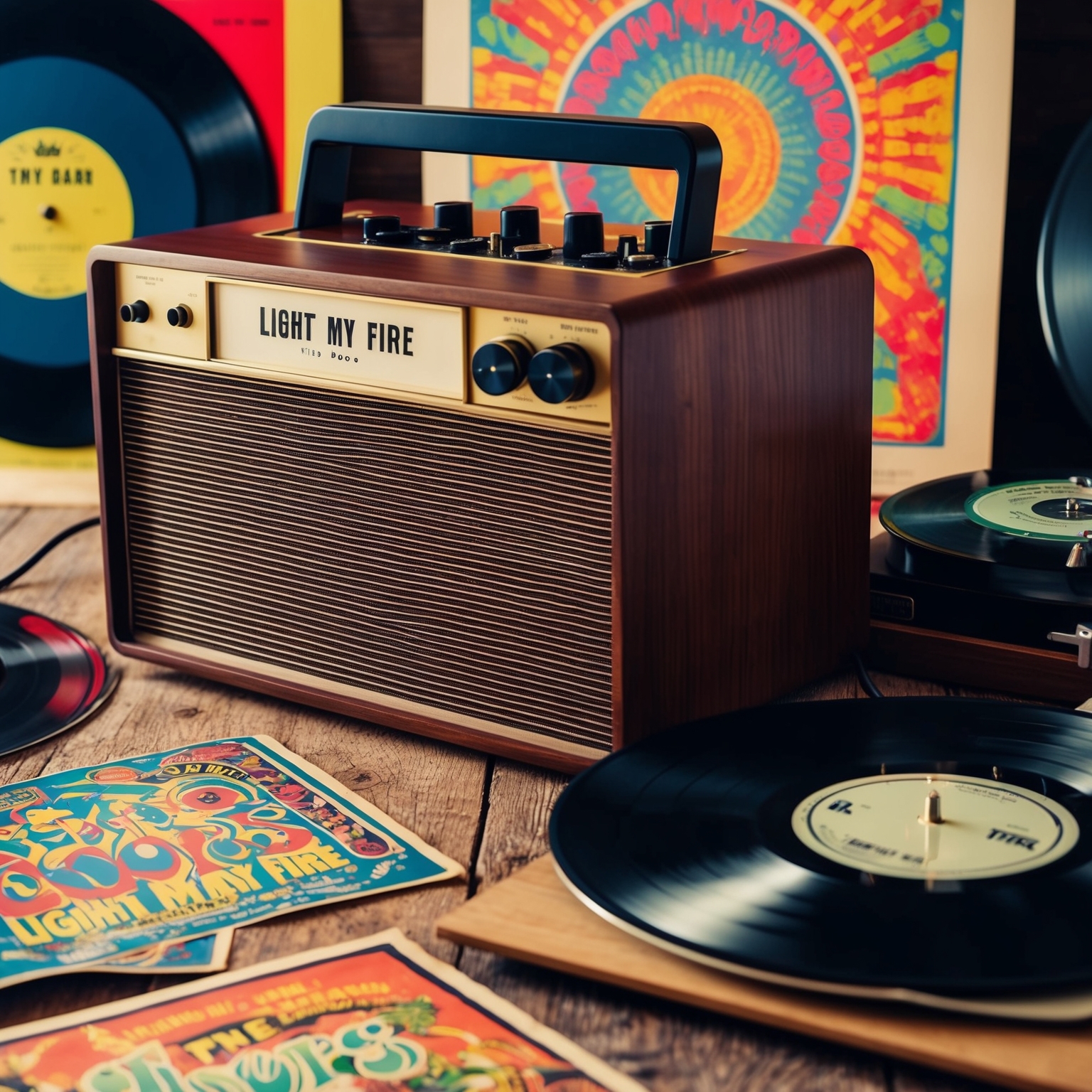
When ‘Light My Fire’ by The Doors was released in April 1967, it quickly lit up the music charts, marking a significant milestone in the band’s career. The song eventually climbed to the number one spot on the Billboard Hot 100 chart in July of the same year, maintaining its position for three consecutive weeks. This remarkable achievement was particularly impressive considering the competitive music scene of the late 1960s, which included a plethora of iconic artists vying for the top positions.
The song’s initial chart success was extraordinary for The Doors, establishing their place in the rock music industry. Up until ‘Light My Fire’, the band had only seen modest success, and this hit served as their breakthrough moment. With its captivating melody and provocative lyrics, ‘Light My Fire’ not only turned into a commercial triumph but also became a defining track for The Doors, effectively shaping their musical trajectory. The song’s infectious popularity contributed significantly to the band’s iconic status in the rock genre.
The marketing and promotion strategies deployed for ‘Light My Fire’ were instrumental in its success. The song gained momentum with frequent radio play and electrifying live performances, including a memorable appearance on The Ed Sullivan Show, even though the performance was marked by some controversy over the lyrics. Critics and fans alike were enamored with its innovative mix of rock and jazz influences. Throughout the decades, it has retained its cultural relevance, inspiring numerous covers and becoming a staple in classic rock playlists, thus ensuring its enduring legacy.
Illuminating ‘Light My Fire’ Through Visuals
Explore the visual interpretations of ‘Light My Fire’ by The Doors, from electrifying live performances to creative fan videos, capturing the song’s enduring charm.
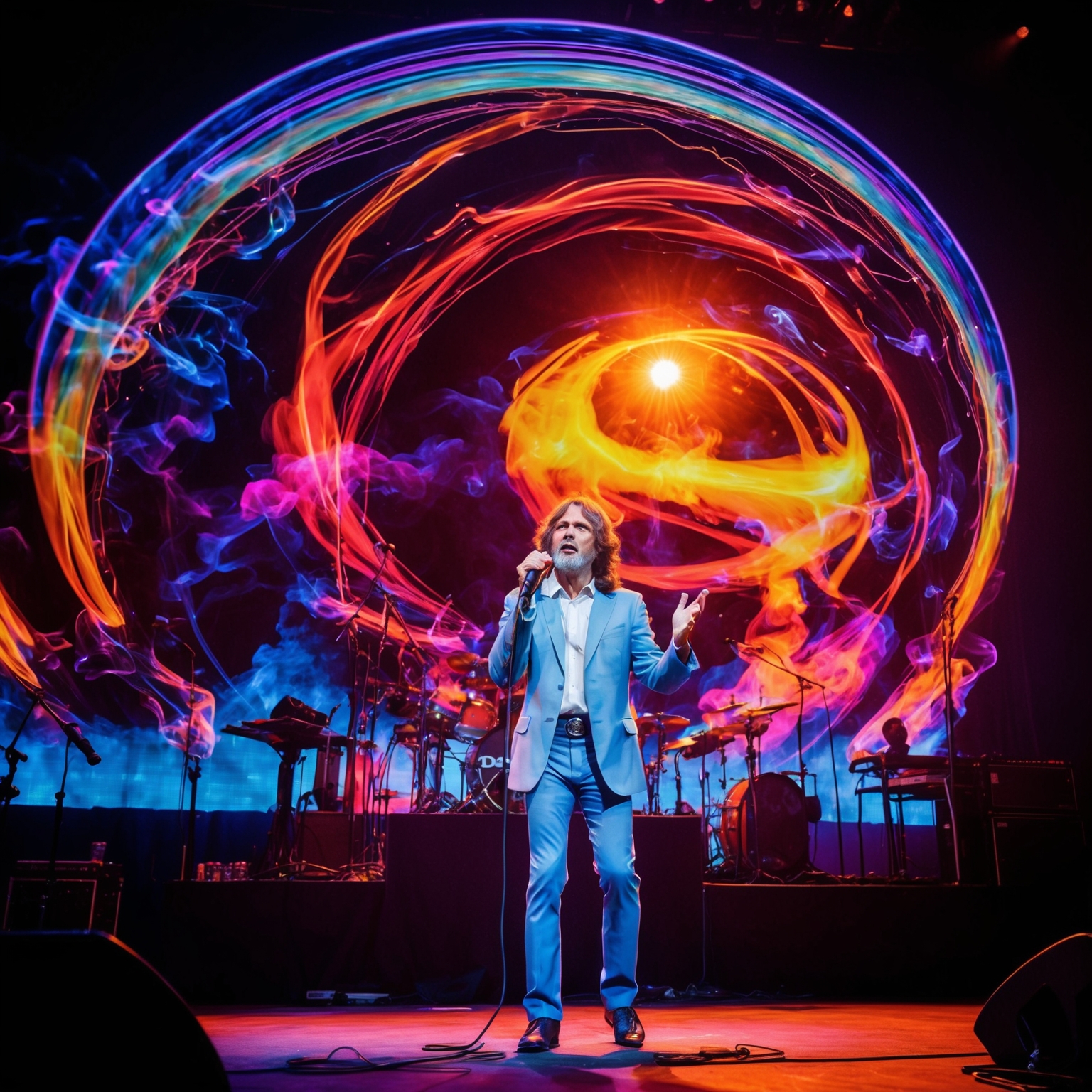
The allure of ‘Light My Fire’ by The Doors extends beyond its auditory brilliance, seeping into the realm of visual representation through various fan-made and live performance videos. While an official music video wasn’t produced at the time of its release — a common practice when the song first hit the airwaves in 1967 — numerous fans and creators have since paid homage through their own visual interpretations. These videos emphasize the song’s timeless and captivating essence, reflecting the era’s psychedelic visuals blended with innovative interpretations.
Jim Morrison’s enigmatic presence comes alive in live performance videos, which are often celebrated as the closest visual representation of the song’s raw, hypnotic energy. The vibrant stage dynamics, with Morrison’s charismatic showmanship and the instrumental prowess of his bandmates, enhance the song’s immersive quality. Such performances have captivated audiences and have been crucial in maintaining the song’s popularity across generations. The unique combination of ethereal lighting, hallucinating vibes, and Morrison’s vocal delivery all contribute markedly to the viewing enthralment.
Critics and fans alike often discuss these visual renditions, appreciating how they capture the authentic spirit of ‘Light My Fire’ while allowing for personal and cultural reinterpretations. The creative liberties taken in various fan-made videos, incorporating modern, abstract imagery with 60s elements, provide a fresh take on the classic track. These visuals breathe new life into the song, making it relevant for today’s audiences, proving that ‘Light My Fire’ continues to ignite imaginations. While it features no celebrity cameos or high-budget production, the grassroots fan effort speaks volumes about the enduring and influencing nature of The Doors’ music.
Dissecting the Musical Masterpiece: Unraveling ‘Light My Fire’
Explore how The Doors’ classic ‘Light My Fire’ combines intricate musical elements and innovative structures for a groundbreaking sound that defined an era.
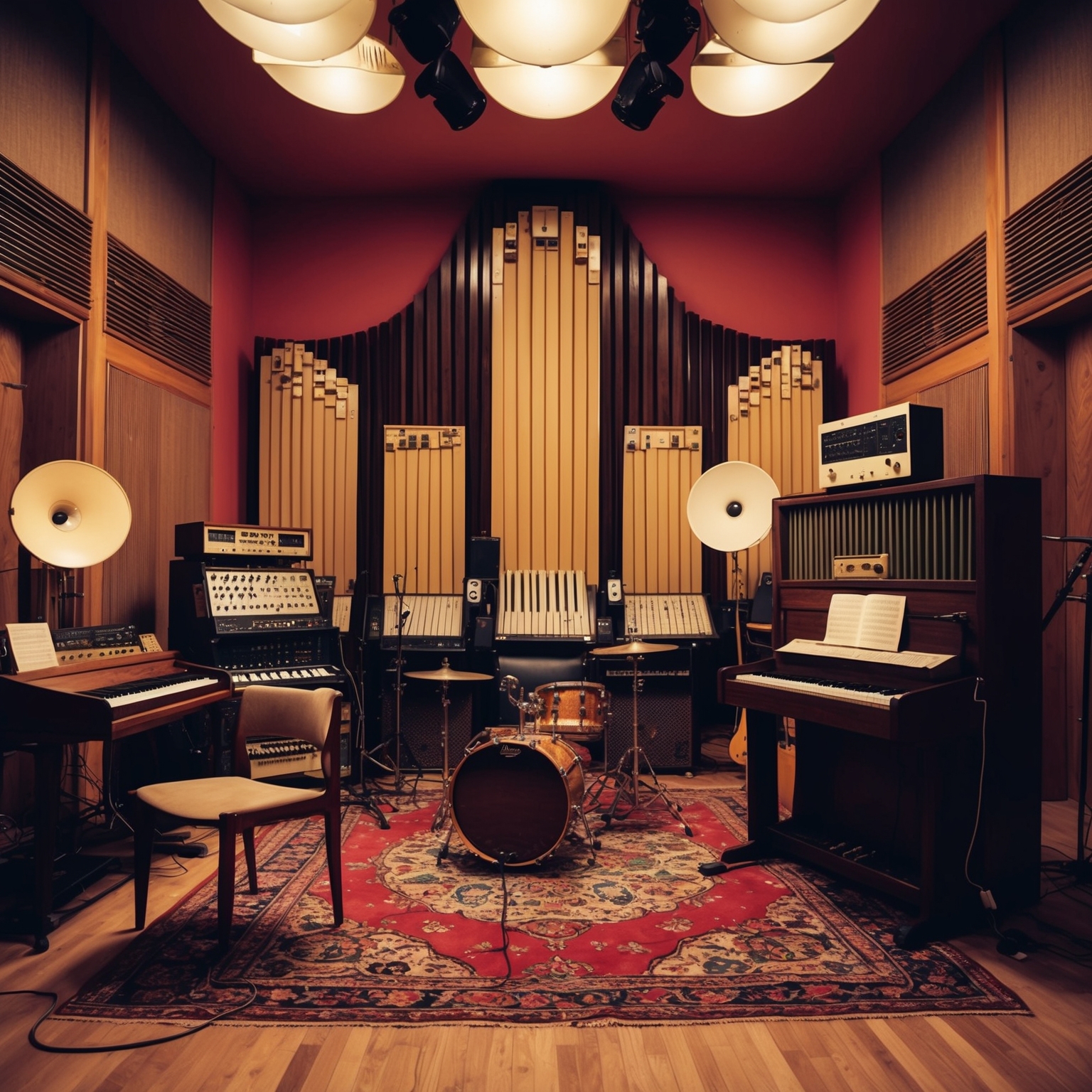
The song ‘Light My Fire’ by The Doors is a quintessential piece of the psychedelic rock era, famous for its innovative structure and captivating instrumentation. Written primarily in the key of A minor, the song’s chord progressions and tempo changes play a significant role in creating its hypnotic and dynamic sound. The opening organ riff, played by Ray Manzarek, is iconic, setting a mysterious and inviting tone that leads the listener deeper into the musical journey. The song starts off with a slow, almost haunting melody but then morphs into a swinging rock beat that maintains a tempo of around 135 BPM.
One of the most distinctive elements of ‘Light My Fire’ is its extended instrumental section, which is quite unique in pop music. This section features a long, improvisational jam session, highlighted by Robby Krieger’s guitar and Manzarek’s organ solos. The interplay between the organ and guitar during this section is not only a showcase of the band’s improvisational skills but also adds to the song’s overall dynamic texture. The rhythm section, with John Densmore’s jazz-influenced drumming and the solid bass lines provided by session musician Larry Knechtel, forms the backbone of the song, keeping the complex musical structure cohesive.
Within the context of The Doors’ discography, ‘Light My Fire’ marked a significant milestone. It was a bold experimentation in lengthy solos and complex song structures, paving the way for future tracks that explored similar musical landscapes. Its release on their self-titled debut album was pivotal, showcasing the group’s ability to blend poetry, rock music, jazz, and blues into a uniquely compelling sound. Compared to other earlier pieces like ‘Break On Through,’ ‘Light My Fire’ demonstrates a more evolved and ambitious approach to composition and thematic exploration, reflecting the band’s progression and influence in the music world.
Inevitably, the recording process of ‘Light My Fire’ at Sunset Sound Recorders is as legendary as its sound. The recording session, spearheaded by producer Paul A. Rothchild, captured the raw energy of The Doors, though it required meticulous effort to balance the extended jam sections and Jim Morrison’s iconic vocal performance. Interestingly, the song was trimmed down from its original seven-minute length to just under three minutes for radio play, illustrating the old industry practice of modifying tracks for commercial purposes.
Decoding the Poetry and Fire Within ‘Light My Fire’
Dive into the lyrical depths of ‘Light My Fire,’ where themes of desire and spontaneity dance with cultural reflections of the 1960s, offering an intimate yet universal narrative.
You know that I would be a liar
If I was to say to you
Girl, we couldn’t get much higher
Come on baby, light my fire
Come on baby, light my fire
Try to set the night on fire
The time to hesitate is through
No time to wallow in the mire
Try now, we can only lose
And our love become a funeral pyre
…
******* This Lyrics is NOT for Commercial use *******
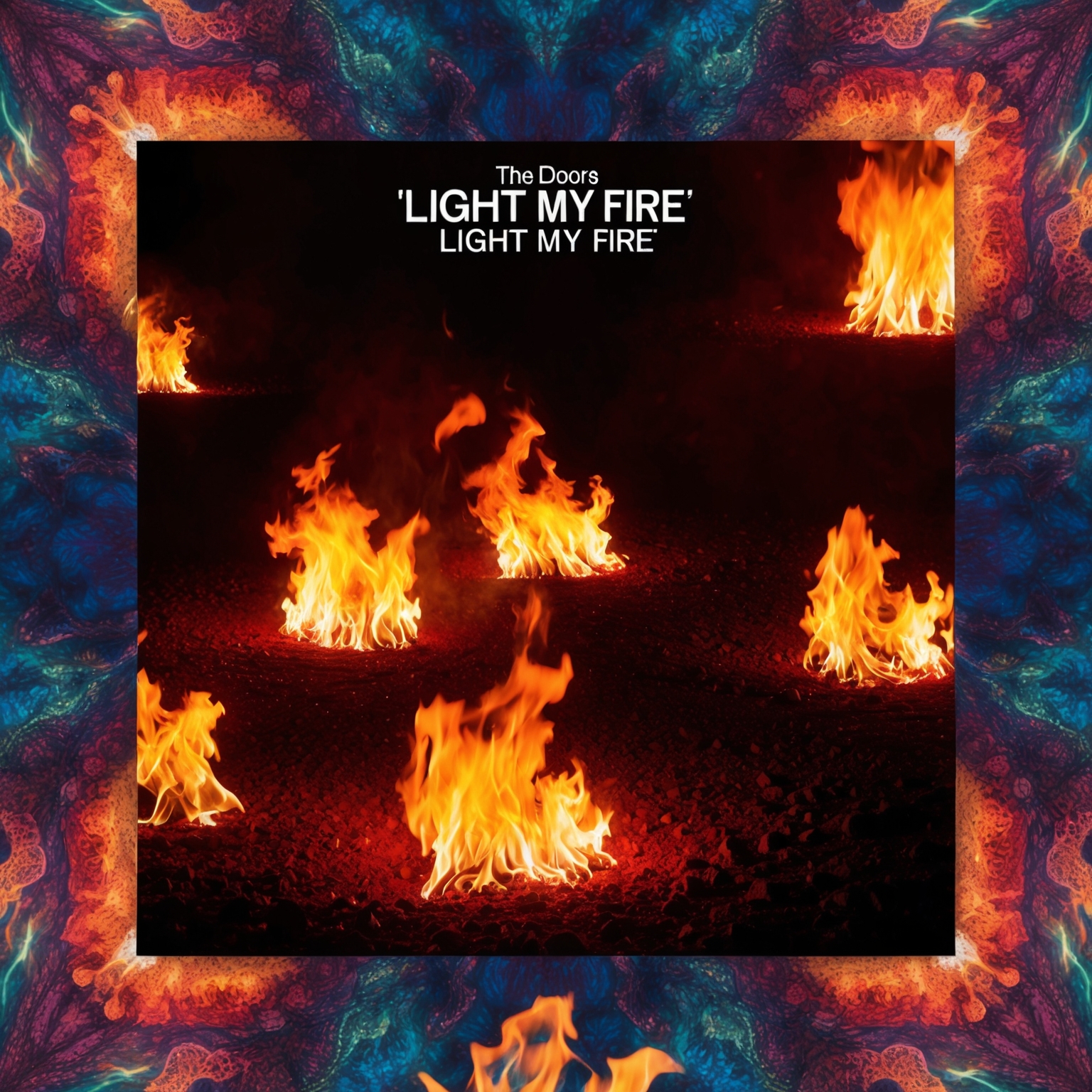 Lyrical Themes and Messages: At its core, ‘Light My Fire’ by The Doors encompasses an exploration of desire and spontaneity, themes that echo the era’s spirit of liberation and defiance of conventional norms. The lyrics express a sense of urgency and burning passion, reflective of the turbulent 1960s. A yearning for breaking away from the established mold and embracing freedom in love and expression resonates deeply with listeners, making it exceptionally timeless. This anthem of passion demonstrates a personal and somewhat romantic narrative, spotlighting the vulnerability in seeking to ignite a powerful connection.
Lyrical Themes and Messages: At its core, ‘Light My Fire’ by The Doors encompasses an exploration of desire and spontaneity, themes that echo the era’s spirit of liberation and defiance of conventional norms. The lyrics express a sense of urgency and burning passion, reflective of the turbulent 1960s. A yearning for breaking away from the established mold and embracing freedom in love and expression resonates deeply with listeners, making it exceptionally timeless. This anthem of passion demonstrates a personal and somewhat romantic narrative, spotlighting the vulnerability in seeking to ignite a powerful connection.
Narrative and Storytelling: The narrative of ‘Light My Fire’ unfolds in a first-person perspective, drawing the listener into an intimate conversation filled with evocative imagery. The invitation to ‘light my fire’ is both personal and universal, opening a dialogue about desires that transcend mere words. Unlike typical storytelling with chronological plotlines, these lyrics embrace an impressionistic style. This allows listeners to infuse their own experiences into the song, effectively enhancing its impact and reach.
Use of Literary Devices: The song is rich with poetic devices. Metaphors abound, as seen in phrases like ‘light my fire’ and ‘funeral pyre’, conceiving vivid images of passion and potential destruction. The clever rhyme scheme and repetitions in the chorus enhance the incantatory nature of the plea, drawing the listener into a hypnotic journey. Furthermore, the simplicity of language juxtaposed with profound metaphors delivers a powerful lyrical experience, layering meaning beneath the apparent simplicity.
Cultural and Social References: Released during the summer of love, the song’s themes capture the rebellious spirit of the 1960s, embodying a quest for personal and collective transformation. The references to setting the night on fire reflect the era’s socio-political upheavals, as well as the burgeoning counter-culture movements. This adds cultural depth, allowing different audiences to project their interpretations and experiences onto the lyrical canvas.
Emotional Impact and Relatability: Emotionally, the lyrics stir a sense of daring and potential. The sense of urgency and the call to action engage the audience both intellectually and emotionally, inviting listeners to consider their own hesitations and passions. This emotional connection is a testament to the relatability and the enduring success of the song, sparking introspection and personal reflection.
Did you know? 🎸 Light My Fire by The Doors was improvised during a jam session!🔥 Groove on that iconic organ solo! #FunFact #TheDoors #ClassicRock #60sVibes https://bit.ly/4hZ9ibW
Click to Tweet

